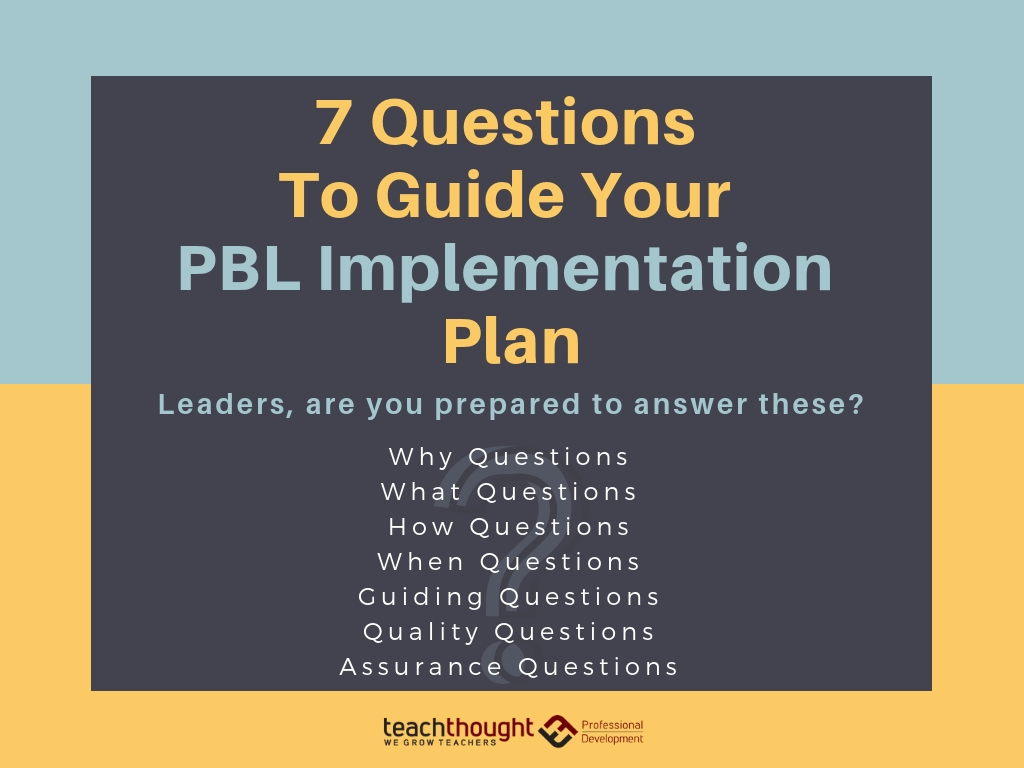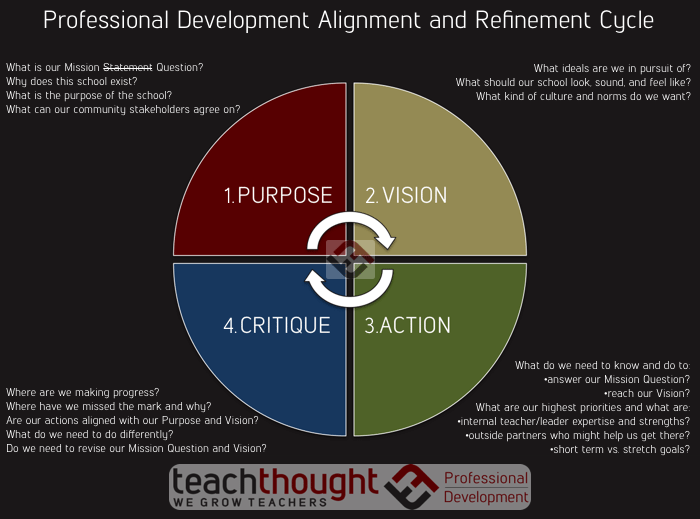
Use These Questions To Guide Your PBL Implementation Plan
contributed by Drew Perkins
It’s that time of year again where the students are walking out the door for the summer and the gears of next year start accelerating.
Spring and late summer (in the United States) is when we get the most inquiries for professional development, and without a doubt, recently PBL is our number one most requested area of growth.
Just like most things, if it’s worth doing, it’s worth doing well and that means being intentional about the process. We love the cultural shifts that can come with PBL and strongly advise leadership to engage in implementation planning sessions that focus on long-term sustainability instead of a just one-off workshop.
With all of our work we strive to be sure our work is aligned with your mission and vision but also seek to engage stakeholders in the deep considerations about your educational ecosystem that are necessary for long-term success.

Ideally this kind of work does not occur in a vacuum, isolated from those stakeholders like teachers, students, parents and community members who will be engaging in this pedagogical shift. As much as possible we encourage those folks to be a part of this process and if you’re truly looking to support and empower your staff and students, it’s important to engage in reciprocal accountability.
We’re not talking about high-stakes accountability, but the kind of professional norms and expectations where you expect to be asked tough questions like those below.
7 Questions To Guide Your PBL Implementation Plan
1. Why Questions:
Why should we engage in PBL? What are the benefits and what is the evidence that supports this kind of shift?
2. What Questions:
What exactly is PBL, especially in our school? Can you show me examples of where it’s been done effectively? Will we have access to quality professional development both externally and internally over a sustained period of time?
3. ‘How’ Questions
What are our next steps and where do we go from there? How do we know this won’t be replaced by something else, sooner rather than later? How do we implement quality PBL?
4. ‘When’ Questions
When will we be starting and when will we have time to work to develop quality PBL? What does it look like in year two, three, and beyond? When will we be provided opportunities to refine our teaching craft in the context of PBL?
5. Guiding Questions
What questions will help us stay focused on growing teaching and learning with PBL? What questions are we trying to answer?
6. Quality Questions
How will we know we’re doing quality PBL? How will we know we’re getting better? What does the growth trajectory look like?
7. Assurance Questions:
What will happen if we struggle? How do we balance PBL with things like testing, accountability, curriculum, and pacing? How will you help us be successful?
To be clear, these kinds of questions should be asked and considered for any major professional development initiative. The thinking behind the questions draws heavily on the work of the late Dr. Richard DuFour’s last book, In Praise of American Educators, in which he discussed successful PLC’s.
Reciprocal accountability can feel intimidating as you open your thinking to critical questions. It’s this sort of democratization, however, that not only empowers others but actually grows true leadership while increasing the efficacy of the work in your school.